Abstract
Glucose transport by jejunal mucosa in vitro and kidney in vivo was investigated in a 3 yr old patient with congenital glucose-galactose malabsorption, her family, and 16 normal volunteers. Glucose transport by normal human jejunal mucosa was concentrative, saturable, sodium and energy dependent, and exhibited competitive inhibition. Biopsy specimens from six normal controls and an asymptomatic 5 yr old brother of the proband accumulated glucose to concentrations 16 times that in the incubation medium. The proband's mucosa was unable to concentrate glucose throughout a 60 min incubation period. Both of her parents and a half sister demonstrated impaired glucose transport. Their values fell between normal and those of the proband. Influx of glucose was impaired but efflux of glucose from the mucosa of these three heterozygotes was identical with that in three normal controls. A kinetic analysis indicated a reduced capacity (Vmax), but a normal affinity (Km) for glucose transport by their intestinal mucosa. All subjects accumulated fructose similarly.
Renal glucose transport was investigated using renal glucose titration techniques. A partial defect in renal glucose reabsorption was found in the proband. Her brother's titration curve was similar to that of seven normal volunteers.
We conclude that familial glucose-galactose malabsorption is inherited as an autosomal recessive trait, that heterozygotes for this disorder are detectable and demonstrate a reduced capacity for glucose transport, and that absent intestinal glucose transport is accompanied by partial impairment of renal glucose transport.
Full text
PDF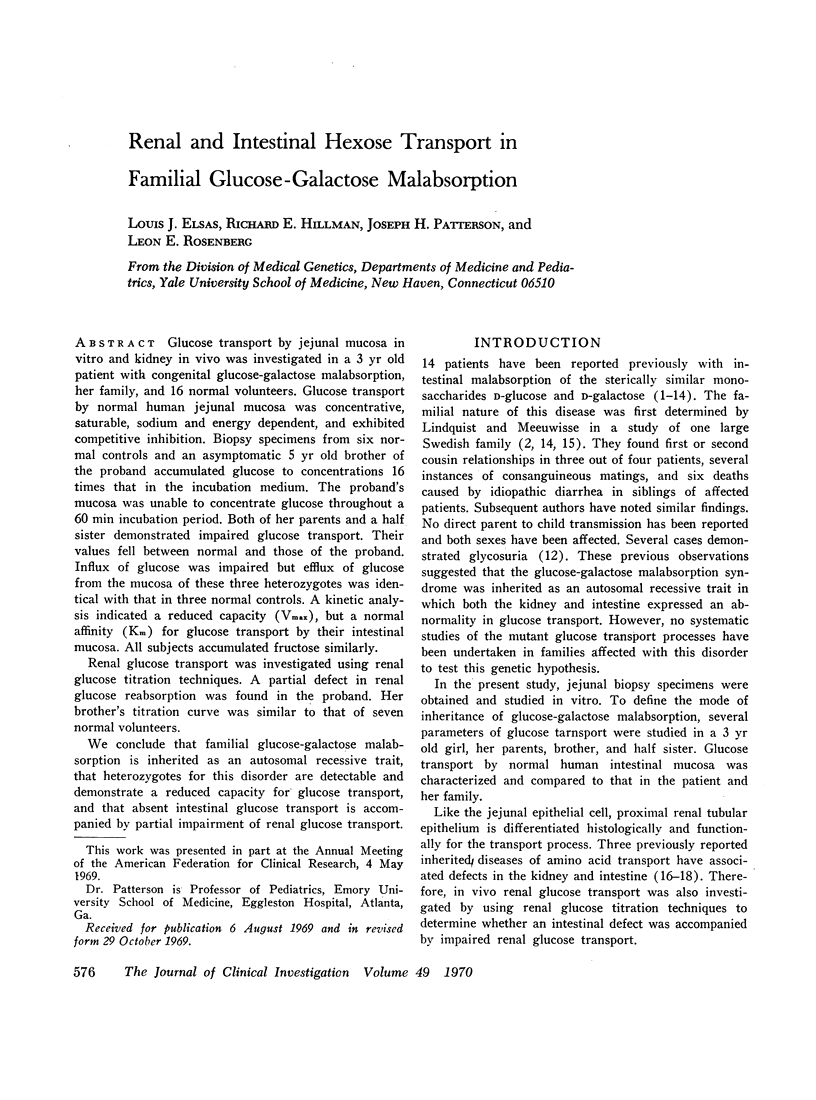
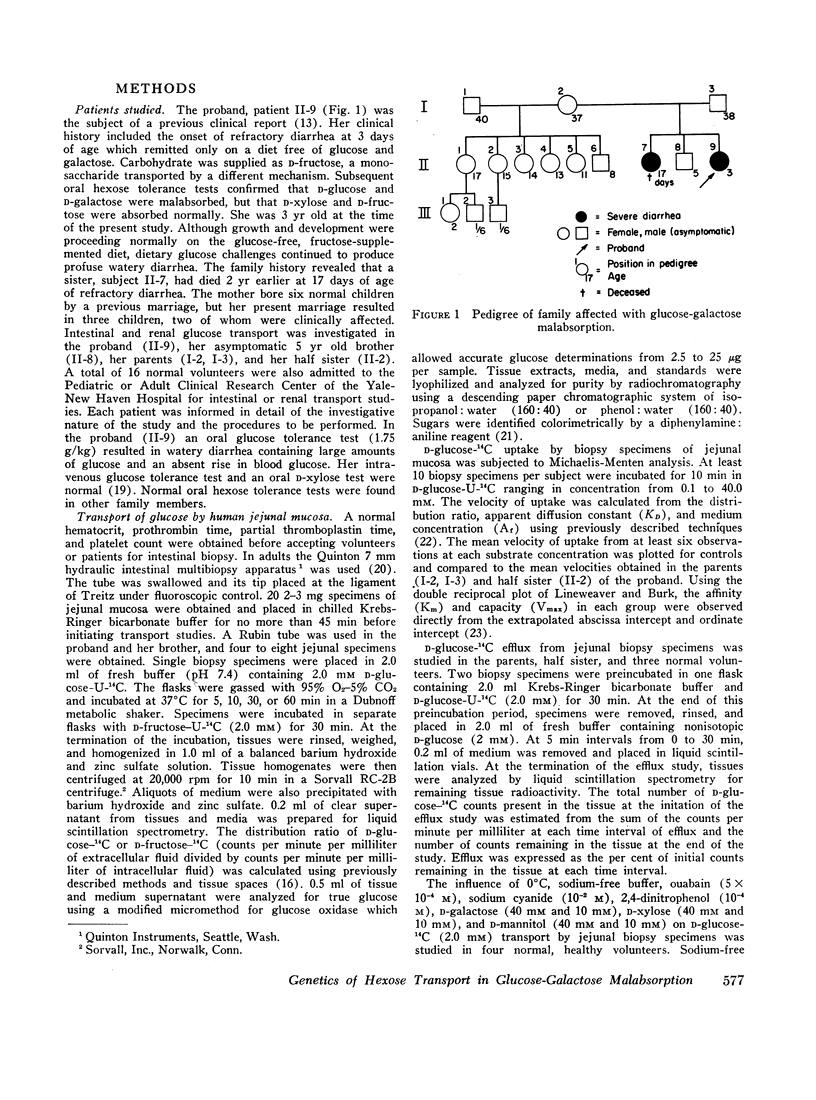
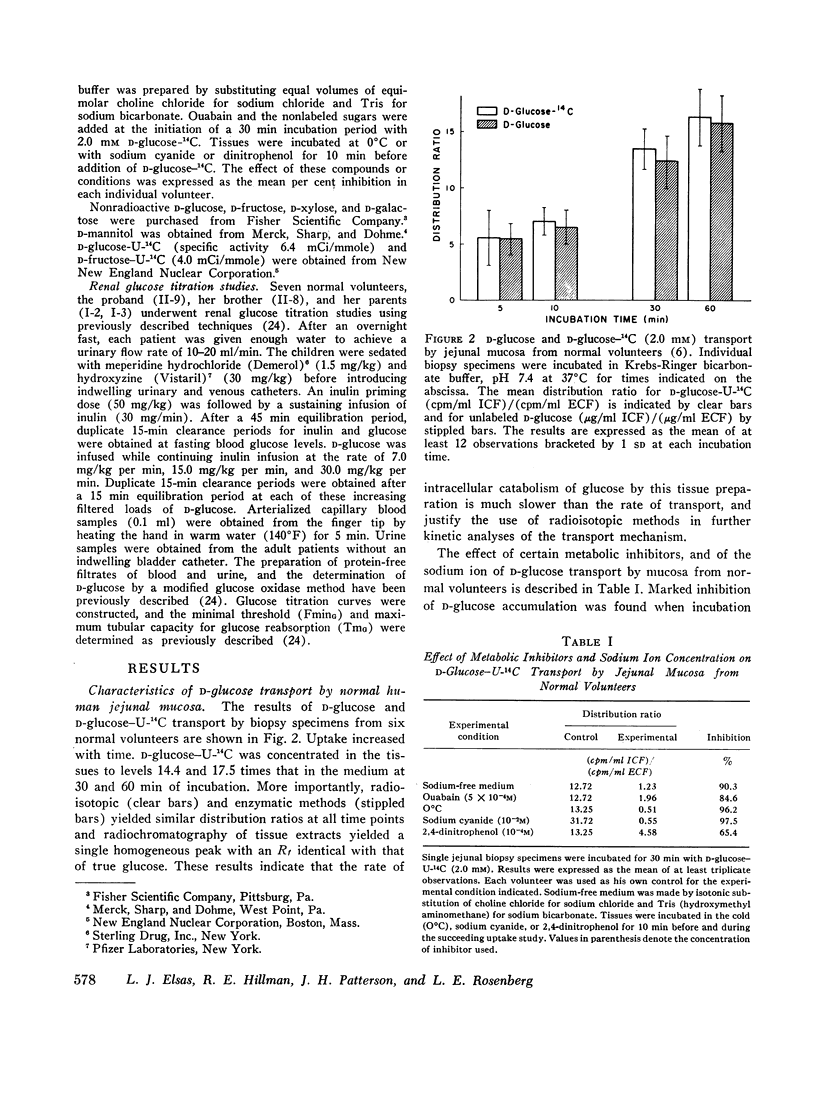
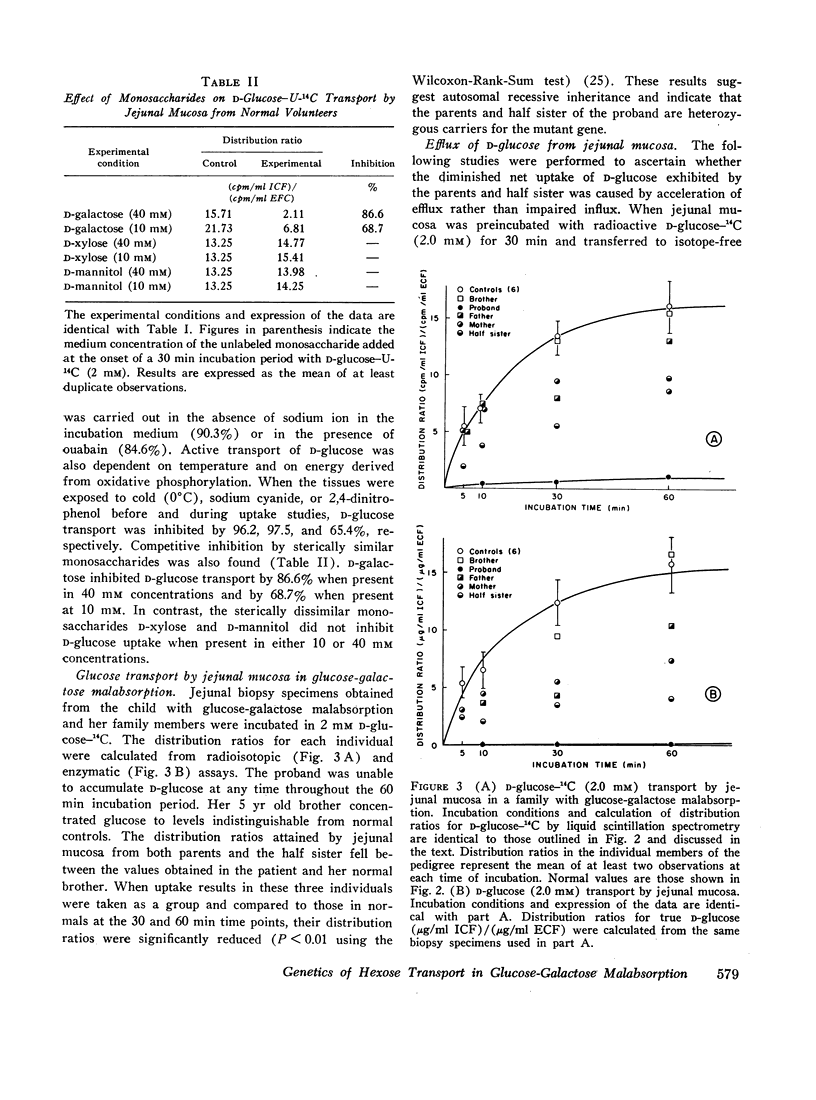
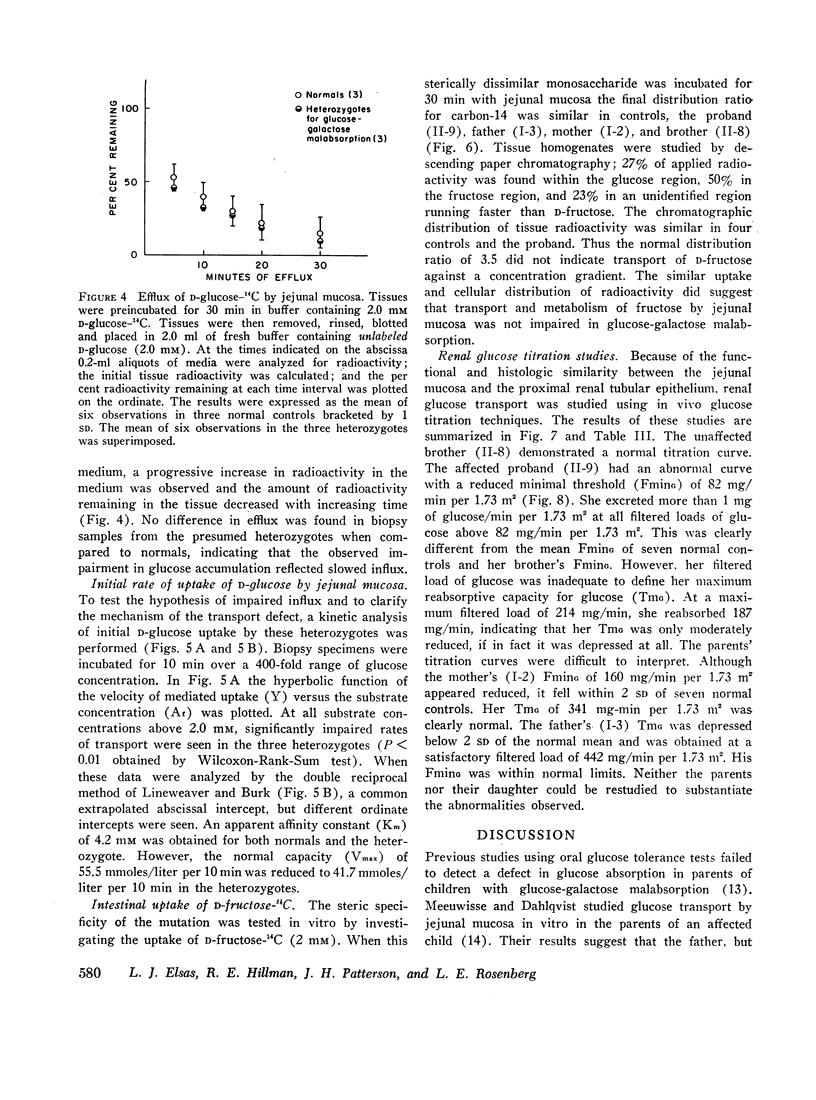
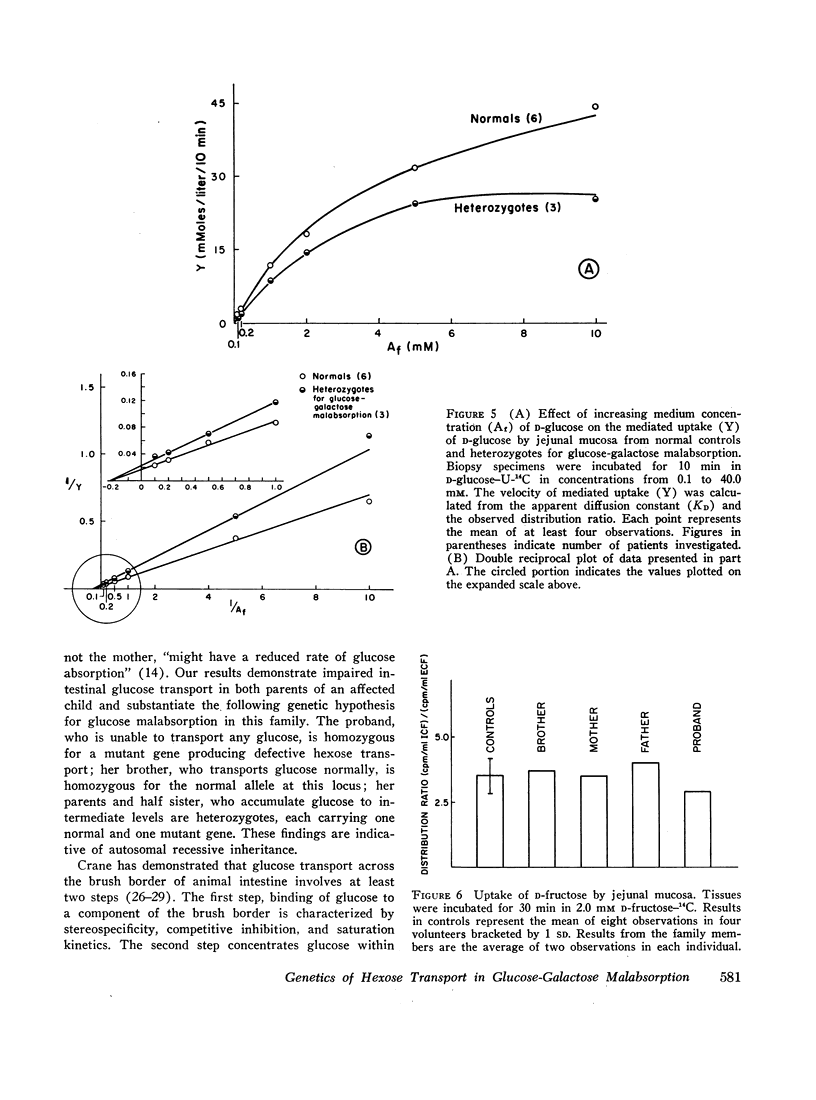
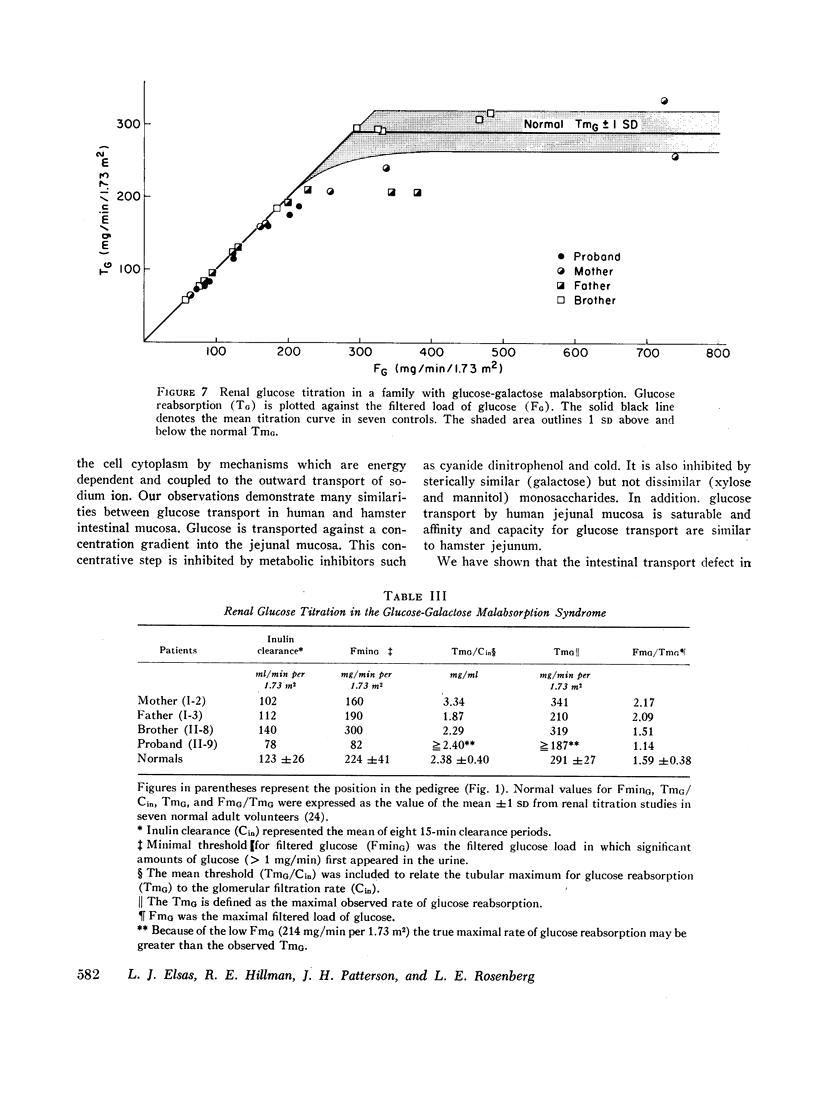
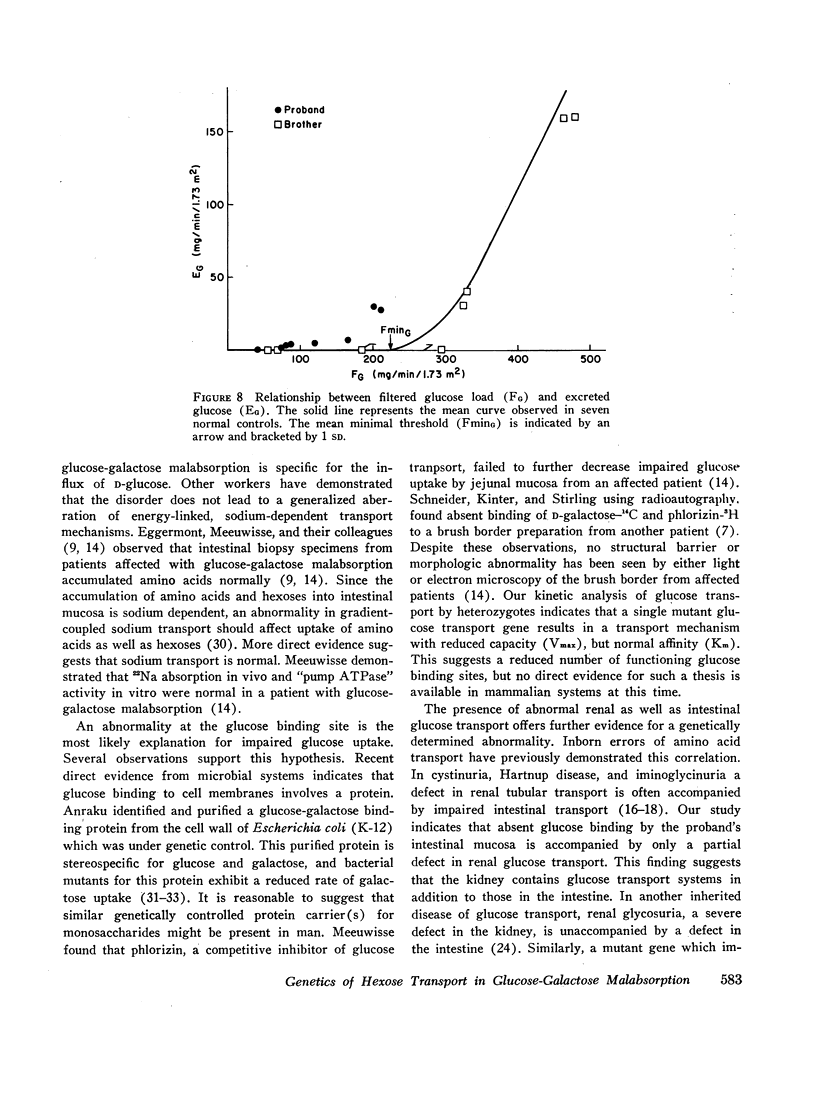
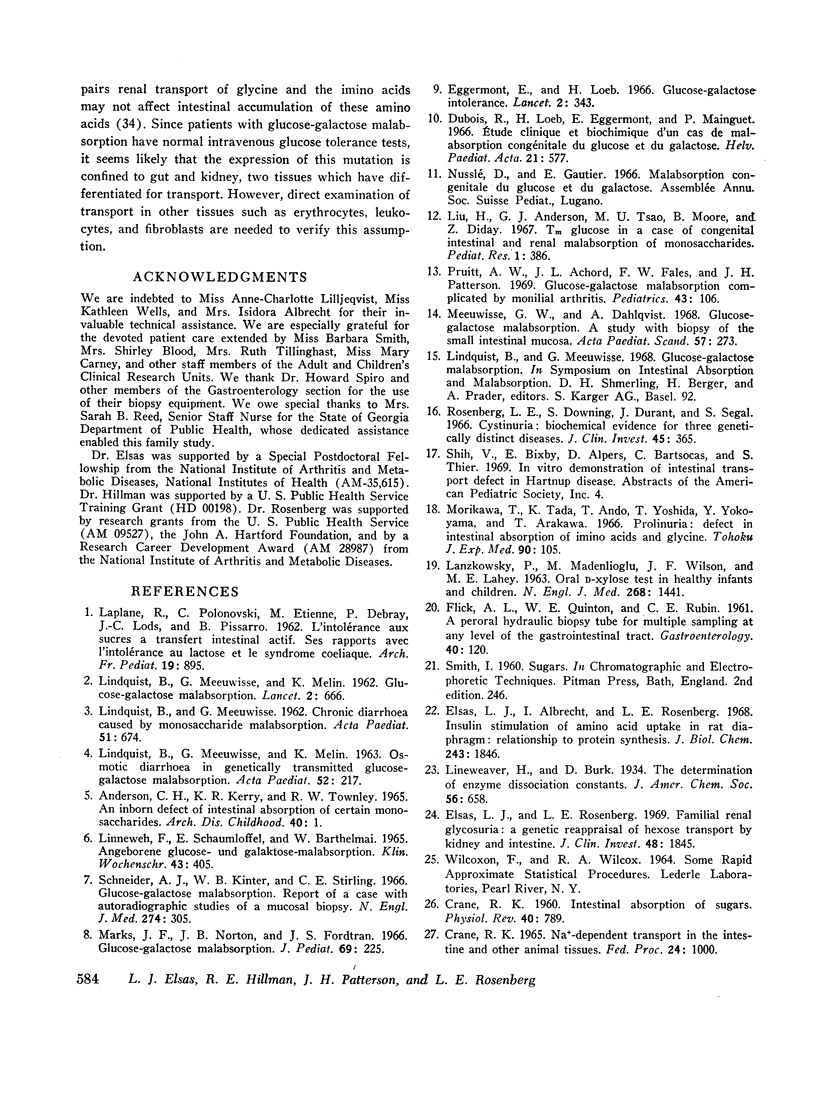
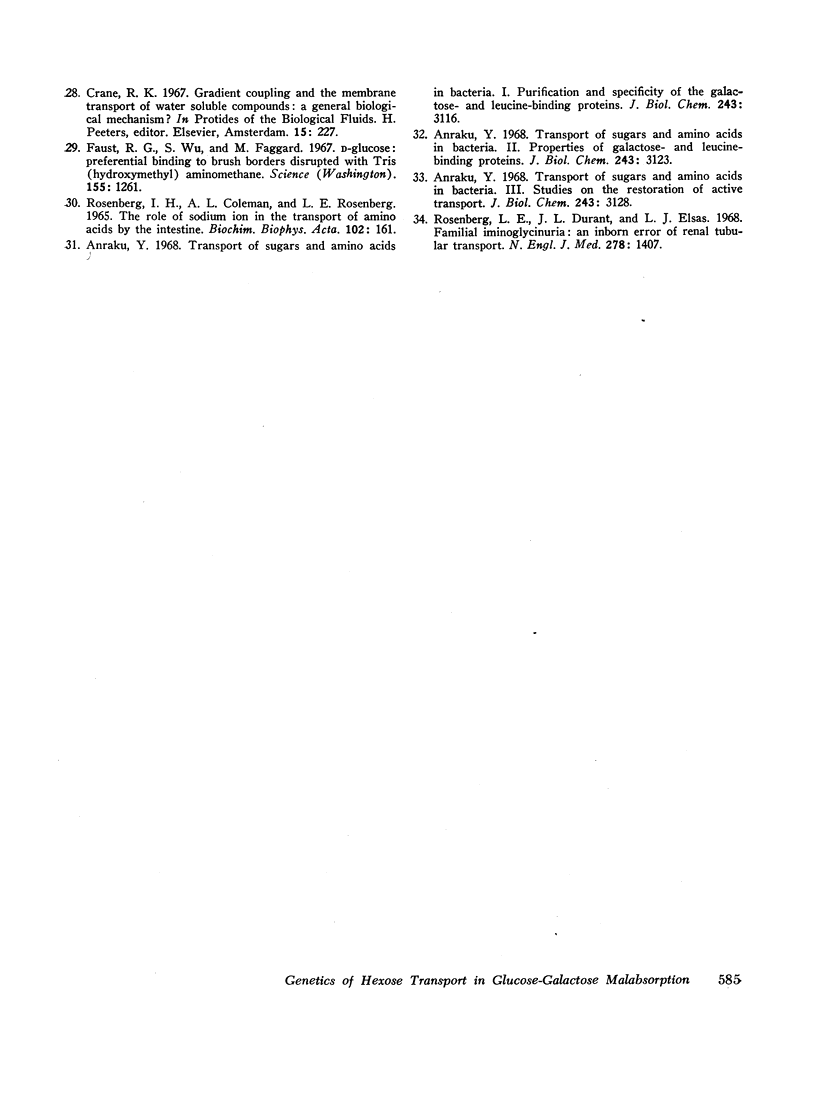
Images in this article
Selected References
These references are in PubMed. This may not be the complete list of references from this article.
- ANDERSON C. M., KERRY K. R., TOWNLEY R. R. AN INBORN DEFECT OF INTESTINAL ABSORPTION OF CERTAIN MONOSACCHARIDES. Arch Dis Child. 1965 Feb;40:1–6. doi: 10.1136/adc.40.209.1. [DOI] [PMC free article] [PubMed] [Google Scholar]
- Anraku Y. Transport of sugars and amino acids in bacteria. 3. Studies on the restoration of active transport. J Biol Chem. 1968 Jun 10;243(11):3128–3135. [PubMed] [Google Scholar]
- Anraku Y. Transport of sugars and amino acids in bacteria. I. Purification and specificity of the galactose- and leucine-binding proteins. J Biol Chem. 1968 Jun 10;243(11):3116–3122. [PubMed] [Google Scholar]
- Anraku Y. Transport of sugars and amino acids in bacteria. II. Properties of galactose- and leucine-binding proteins. J Biol Chem. 1968 Jun 10;243(11):3123–3127. [PubMed] [Google Scholar]
- CRANE R. K. Intestinal absorption of sugars. Physiol Rev. 1960 Oct;40:789–825. doi: 10.1152/physrev.1960.40.4.789. [DOI] [PubMed] [Google Scholar]
- Crane R. K. Na+ -dependent transport in the intestine and other animal tissues. Fed Proc. 1965 Sep-Oct;24(5):1000–1006. [PubMed] [Google Scholar]
- Elsas L. J., Albrecht I., Rosenberg L. E. Insulin stimulation of amino acid uptake in rat diaphragm. Relationship to protein sythesis. J Biol Chem. 1968 Apr 25;243(8):1846–1853. [PubMed] [Google Scholar]
- Elsas L. J., Rosenberg L. E. Familial renal glycosuria: a genetic reappraisal of hexose transport by kidney and intestine. J Clin Invest. 1969 Oct;48(10):1845–1854. doi: 10.1172/JCI106150. [DOI] [PMC free article] [PubMed] [Google Scholar]
- FLICK A. L., QUINTON W. E., RUBIN C. E. A peroral hydraulic biopsy tube for multiple sampling at any level of the gastro-intestinal tract. Gastroenterology. 1961 Jan;40:120–126. [PubMed] [Google Scholar]
- Faust R. G., Wu S. L., Faggard M. L. D-glucose: preferential binding to brush borders disrupted with tris(hydroxymethyl)aminomethane. Science. 1967 Mar 10;155(3767):1261–1263. doi: 10.1126/science.155.3767.1261. [DOI] [PubMed] [Google Scholar]
- LINDQUIST B., MEEUWISSE G. W. Chronic diarrhoea caused by monosaccharide malabsorption. Acta Paediatr. 1962 Nov;51:674–685. doi: 10.1111/j.1651-2227.1962.tb06600.x. [DOI] [PubMed] [Google Scholar]
- LINNEWEH F., SCHAUMLOEFFEL E., BARTHELMAI W. ANGEBORENE GLUCOSE-UND GALAKTOSE-MALABSORPTION. Klin Wochenschr. 1965 Apr 15;43:405–409. doi: 10.1007/BF01483844. [DOI] [PubMed] [Google Scholar]
- Liu H. Y., Anderson G. J., Tsao M. U., Moore B. F., Giday Z. Tm glucose in a case of congenital intestinal and renal malabsorption of monosaccharides. Pediatr Res. 1967 Sep;1(5):386–394. doi: 10.1203/00006450-196709000-00006. [DOI] [PubMed] [Google Scholar]
- Marks J. F., Norton J. B., Fordtran J. S. Glucose-galactose malabsorption. J Pediatr. 1966 Aug;69(2):225–228. doi: 10.1016/s0022-3476(66)80324-4. [DOI] [PubMed] [Google Scholar]
- Meeuwisse G. W., Dahlqvist A. Glucose-galactose malabsorption. A study with biopsy of the small intestinal mucosa. Acta Paediatr Scand. 1968 Jul;57(4):273–280. doi: 10.1111/j.1651-2227.1968.tb07291.x. [DOI] [PubMed] [Google Scholar]
- Morikawa T., Tada K., Ando T., Yoshida T., Yokoyama Y., Arakawa T. Prolinuria: defect in intestinal absorption of imino acids and glycine. Tohoku J Exp Med. 1966 Oct;90(2):105–116. doi: 10.1620/tjem.90.105. [DOI] [PubMed] [Google Scholar]
- Pruitt A. W., Achord J. L., Fales F. W., Patterson J. H. Glucose-galactose malabsorption complicated by monilial arthritis. Pediatrics. 1969 Jan;43(1):106–110. [PubMed] [Google Scholar]
- Rosenberg I. H., Coleman A. L., Rosenberg L. E. The role of sodium ion in the transport of amino acids by the intestine. Biochim Biophys Acta. 1965 May 25;102(1):161–171. doi: 10.1016/0926-6585(65)90210-4. [DOI] [PubMed] [Google Scholar]
- Rosenberg L. E., Downing S., Durant J. L., Segal S. Cystinuria: biochemical evidence for three genetically distinct diseases. J Clin Invest. 1966 Mar;45(3):365–371. doi: 10.1172/JCI105351. [DOI] [PMC free article] [PubMed] [Google Scholar]
- Rosenberg L. E., Durant J. L., Elsas L. J. Familial iminoglycinuria. An inborn error of renal tubular transport. N Engl J Med. 1968 Jun 27;278(26):1407–1413. doi: 10.1056/NEJM196806272782601. [DOI] [PubMed] [Google Scholar]
- Schneider A. J., Kinter W. B., Stirling C. E. Glucose-galactose malabsorption. Report of a case with autoradiographic studies of a mucosal biopsy. N Engl J Med. 1966 Feb 10;274(6):305–312. doi: 10.1056/NEJM196602102740603. [DOI] [PubMed] [Google Scholar]



